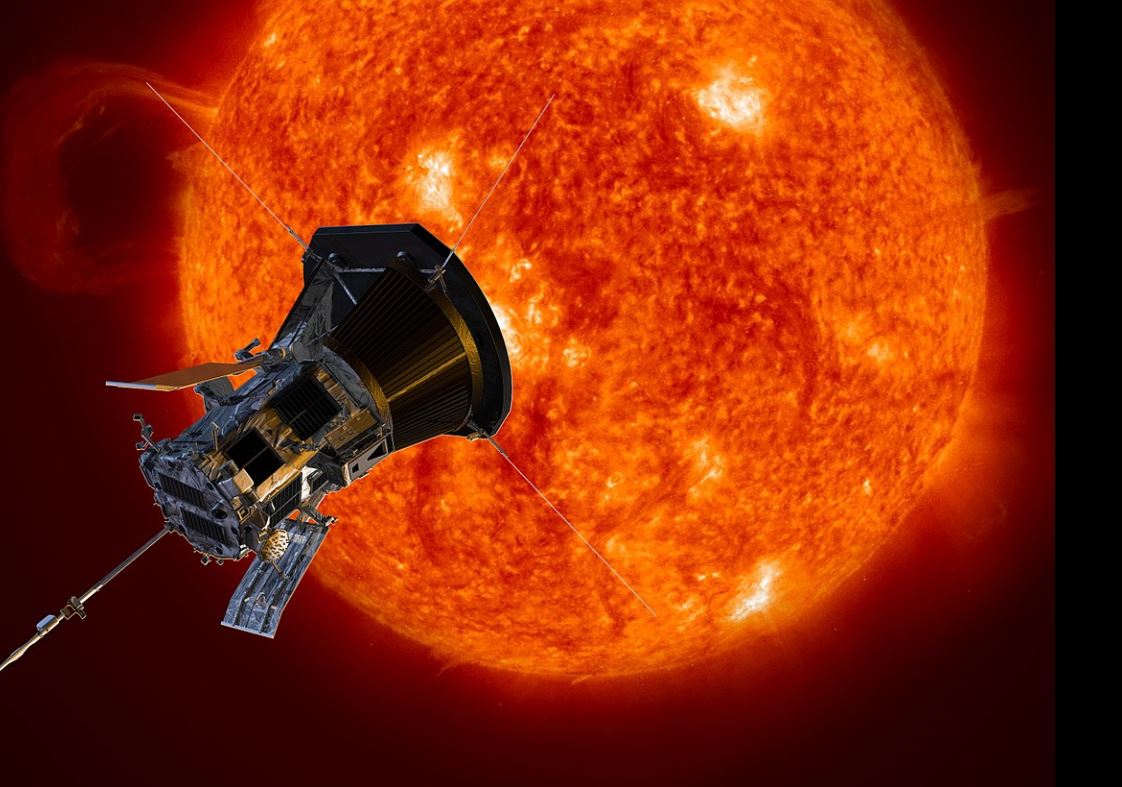Professor Harra is one of the team working on the European Space Agency's Solar Orbiter mission, which launches in February 2020 on a seven-year mission to uncover some of the Sun's secrets. She is an Affiliate Professor of Solar Astrophysics at ETH Zurich and director of the Physical Meteorological Observatory Davos (PMOD) and the World Radiation Center (WRC).
This satellite will orbit the sun closer than mercury, and unlock deep secrets
by Shane Richmond, 20 January 2020
"We'll be able to see the Sun's poles for the first time, which is really exciting," says Professor Louise Harra. "They determine a lot of the Sun's activity and we've never seen them before."

Image: ESA/ATG medialab
As part of the team working on the Orbiter's imaging equipment, including the Extreme Ultraviolet Imager, which will provide images of the solar atmospheric layers above the Sun's 'surface', and the X-ray Spectrometer and Telescope, that will allow scientists to analyse X-ray emissions from the Sun.
As part of the team working on the Orbiter's imaging equipment, including the Extreme Ultraviolet Imager, which will provide images of the solar atmospheric layers above the Sun's 'surface', and the X-ray Spectrometer and Telescope, that will allow scientists to analyse X-ray emissions from the Sun. After launch the Orbiter will take almost two years to reach its operational orbit using gravity assist manoeuvres around the Earth and Venus - a kind of slingshot effect in which a spacecraft uses a planet's gravity to alter its speed and direction. Along the way it will gather information about solar winds.
"It's hard to determine exactly where the solar wind comes from and how it is created," says Professor Harra. "This mission will hopefully give us a much greater understanding."
The spacecraft's operational orbit will, at its closest to the Sun, take it slightly closer than the orbit of Mercury. With each pass it will be able to gather vital data. The spacecraft will be in position for five years but with each orbit of the Sun taking around 150 days, the team will have only a dozen or so opportunities to gather data, so each orbit will be devoted to gathering information on a specific question.
There are many challenges in a mission of this nature, not least of which is protecting the spacecraft's sensitive instruments from the heat of the Sun. At its closest, the Orbiter will be exposed to around 500C. Even the solar panels that will power the craft had to be specially designed, as the typical ones used on spacecraft are not built to handle those temperatures.
Protecting the Orbiter's sensitive instruments is a heat shield that ensures the imaging equipment and other sensors are exposed to just 20C - close to a normal room temperature.
A second challenge is getting data back from the Orbiter during its mission. Radio communications back to Earth require a line of sight, even across such vast distances, so it won't be possible to get information back from the Orbiter while it's behind the Sun, for example.
That means data needs to be stored onboard and the Orbiter's computers have to be programmed to manage the data efficiently, not storing unnecessary information or wasting time transmitting poor-quality data. Getting that right means giving the Orbiter a higher degree of 'autonomy' than a spacecraft in Earth orbit would need.
As technology advances, future missions might be able to get even closer to the Sun. Greater heat shields would be needed but innovations such as solar sails might one day make it possible for a craft to hover over the Sun's poles. For now, though, the Solar Orbiter has the potential to vastly expand our knowledge of the Sun.
February's launch, from Cape Canaveral, in Florida, USA, will begin the actual mission but years of work have already been done in developing each individual component, putting them together as they will be in the Orbiter then testing again, and so on. Every eventuality has been considered and planned for but, as with any space mission, there is a lot that can go wrong.
Protecting the Orbiter's sensitive instruments is a heat shield that ensures the imaging equipment and other sensors are exposed to just 20C - close to a normal room temperature.
A second challenge is getting data back from the Orbiter during its mission. Radio communications back to Earth require a line of sight, even across such vast distances, so it won't be possible to get information back from the Orbiter while it's behind the Sun, for example.
That means data needs to be stored onboard and the Orbiter's computers have to be programmed to manage the data efficiently, not storing unnecessary information or wasting time transmitting poor-quality data. Getting that right means giving the Orbiter a higher degree of 'autonomy' than a spacecraft in Earth orbit would need.
As technology advances, future missions might be able to get even closer to the Sun. Greater heat shields would be needed but innovations such as solar sails might one day make it possible for a craft to hover over the Sun's poles. For now, though, the Solar Orbiter has the potential to vastly expand our knowledge of the Sun.
February's launch, from Cape Canaveral, in Florida, USA, will begin the actual mission but years of work have already been done in developing each individual component, putting them together as they will be in the Orbiter then testing again, and so on. Every eventuality has been considered and planned for but, as with any space mission, there is a lot that can go wrong.
"I'll be there watching in February, with butterflies in my stomach!"– Professor Louise Harra



